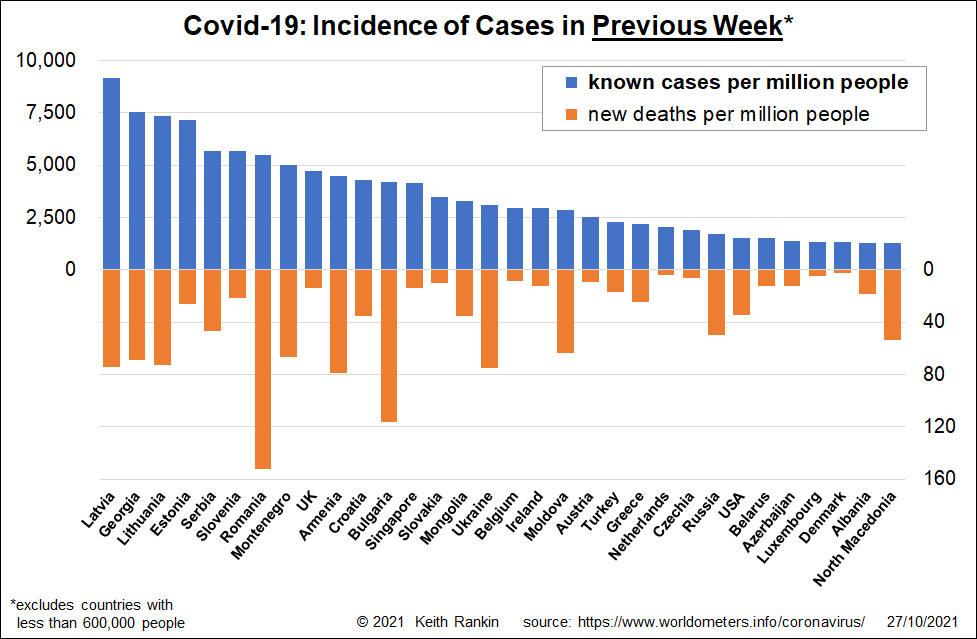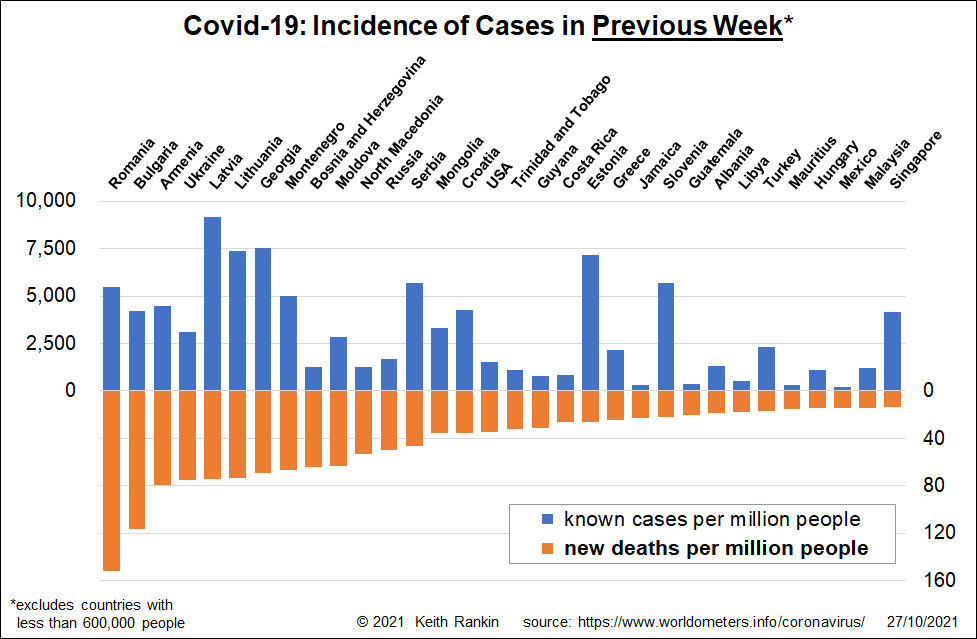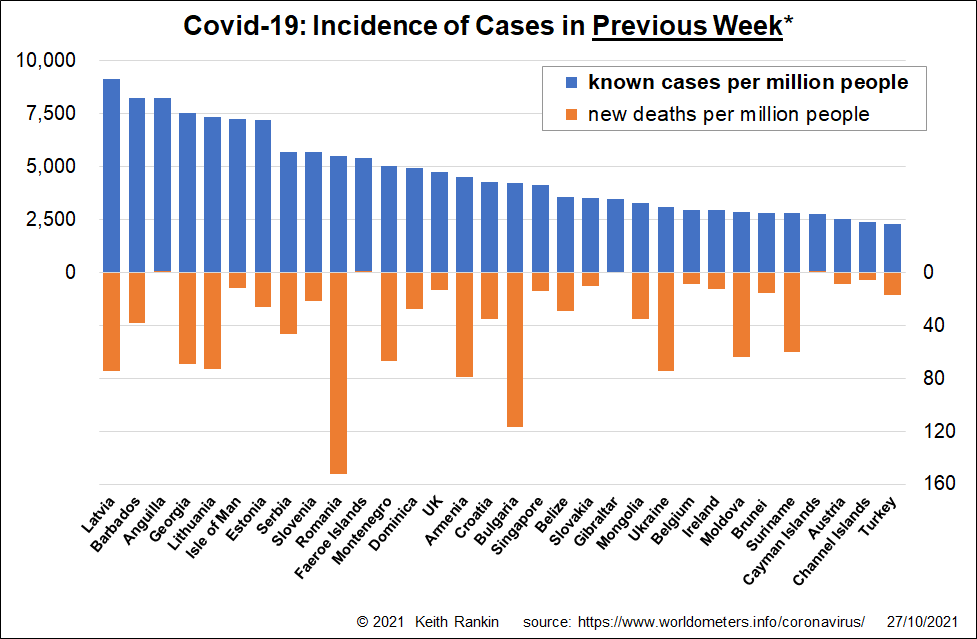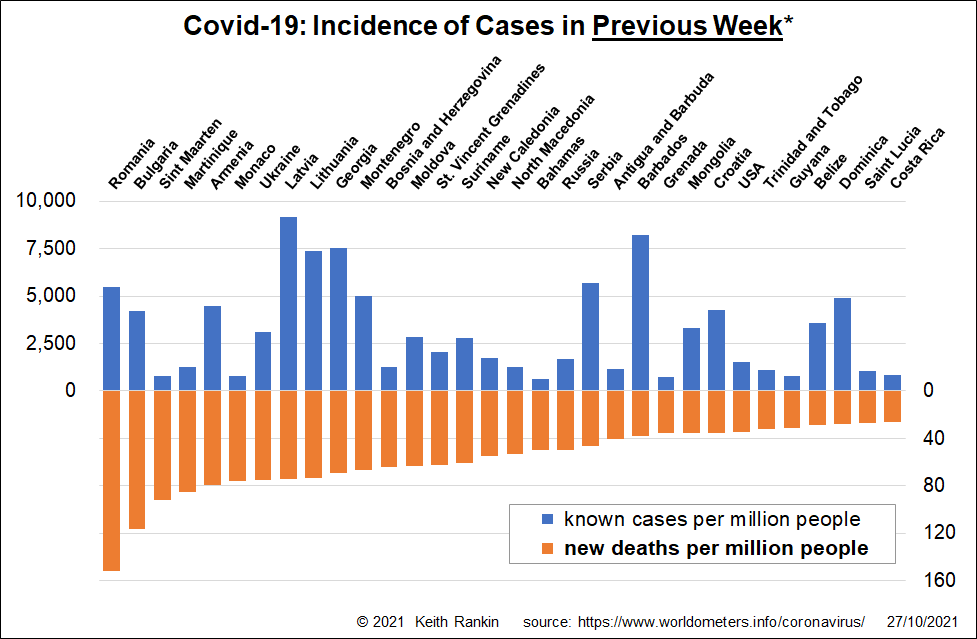Analysis by Keith Rankin.


These charts are of the type that I have published approximately monthly. Last time, three weeks ago, the key covid places were clearly the Caribbean and the Balkans. This time, while these two regions are important pandemic sites, there is clearly a new outbreak beginning in the European Union, starting from both Eastern Europe and the United Kingdom.
The first charts shows reported cases and deaths in countries with populations over 600,000. The Baltic States (Lithuania, Latvia, Estonia) are clear leaders here. We also see the Caucasus countries (Georgia, Armenia, Azerbaijan), and the other ‘western Soviet’ countries (Russia, Ukraine, Belarus, Moldova). The Balkans are strongly present (Romania, Bulgaria, Serbia, Slovenia, Croatia, Montenegro, North Macedonia, Albania, Bosnia). The United States and the United Kingdom remain strongly present. The newer re-entrants are Singapore and a number of West European countries (Ireland, Belgium, Netherlands, Luxembourg, Denmark, Austria). We also see new outbreaks in Hungary, Czechia, and Slovakia, with Poland not far behind. Other places to note are Greece and Turkey – and Libya – on the Mediterranean. And, on the ‘deaths’ chart, some of the larger Caribbean countries that didn’t quite make it onto previous months’ charts (Jamaica, Trinidad, Guyana); plus Mauritius, a similar kind of holiday place as Jamaica and Trinidad.
The largest European Union countries don’t show up yet, but it must only be a matter of time before they do; of these big four, only Spain is stable.
There are indications that some European Union countries are becoming tardy in reporting their deaths. Thus, the paucity of European Union countries in the deaths chart should not be taken as evidence of acceptably low death rates. While Sweden continues to be well down the covid league tables, and truthfully so, it should be noted that, while having trustworthy data, Sweden is particularly tardy in reporting its Covid19 deaths.


The remaining two charts include the little countries; countries which we should not ignore (as we do) simply because they are little. We note that, in addition to the Caribbean countries and territories (Barbados, Anguilla, Dominica, St Vincent, St Lucia, Antigua, Grenada, Trinidad, Suriname, Guyana, Belize, Cayman Islands, Sint Martin, Martinique, Bahamas, Costa Rica) [plus New Caledonia], we also have the semi-independent islands that are for all practical purposes part of the United Kingdom (Isle of Man, Channel Islands, Gibraltar, Cayman Islands). We see Brunei, which is very rich and quite connected to Singapore.
And we see Denmark’s territory between the United Kingdom and Iceland; the Faeroe Islands. Greenland, Denmark’s other realm ‘nation’ is also climbing up the table. All is not well in the state of Denmark.
Keith Rankin (keith at rankin dot nz), trained as an economic historian, is a retired lecturer in Economics and Statistics. He lives in Auckland, New Zealand.







